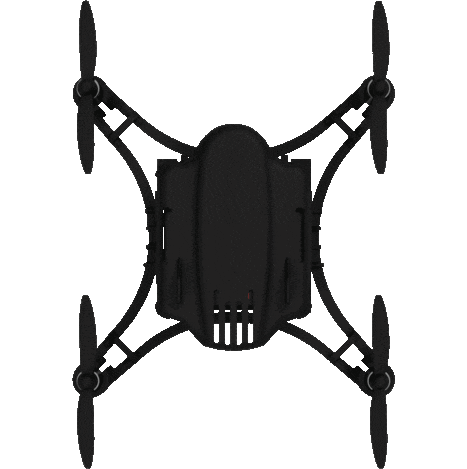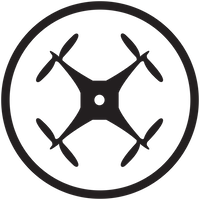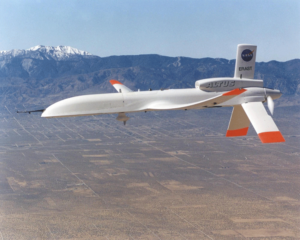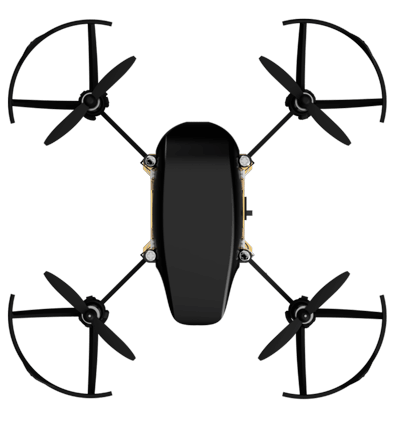Module 1
Introduction and Applications
Time Duration: 20 minutes
🎓 Objective:
To make the students understand what a drone is and how it is classified based on structure and usage. It is essential for them to distinguish between a UAV and non-UAV objects
📖 Content
Key Terms: UAV, History of UAVs, Applications of UAV
The term UAV is an abbreviation of Unmanned Aerial Vehicle, meaning aerial vehicles which operate without a human pilot. UAVs are commonly used in both the military and police forces in situations where the risk of sending a human piloted aircraft is unacceptable, or the situation makes using a manned aircraft impractical.
History of UAVs
The earliest recorded use of a UAV is August 22, 1849, when the Austrians attacked Venice using unmanned balloons loaded with explosives.
Tip: Tell this as an interesting story to students, ask them first what do they think was the first time drones used.
Classification of UAVs based on structure
Based on the structure UAVs are classified into following:Need to elaborate on each type on:
- how they produce lift
- how they control.
- Application space. Pros and cons of each
Also how is a helicopter work and how the issues of helicopter helped paved the way for Quadcopters.
1.Fixed Wing Structure
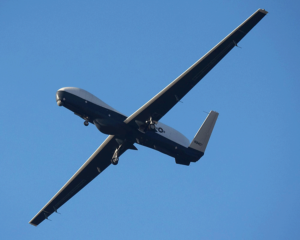
- Fixed wing drones as the name suggests have two fixed wings along the lateral axis of the aircraft. Fixed wing UAVs consists of a rigid wing that has a predetermined shape (airfoil) which make flight capable by generating lift caused by the UAV’s forward airspeed. This airspeed is generated by forward thrust usually by the means of a propeller (Explained in later modules) being turned by an internal combustion engine or electric motor.
- Control of the UAV comes from control surfaces built into the wing itself, these traditionally consist of ailerons an elevator and a rudder. They allow the UAV to freely rotate around three axes that are perpendicular to each other and intersect at the UAV’s center of gravity.
- Advantages :
- it consists of a much simpler structure in comparison to a rotary wing. The simpler structure provides a less complicated maintenance and repair process thus allowing the user more operational time at a lower cost.
- Disadvantages :
- The only disadvantages to a fixed wing solution is the need for a runway or launcher for takeoff and landing however VTOL (vertical take off/landing) and STOL (short take off/landing) solutions are very popular to help eradicate this issue.
- Also fixed wing aircraft require air moving over their wings to generate lift, they must stay in a constant forward motion, which means they can’t stay stationary the same way a rotary wing UAV can. This means fixed wing solutions are not best suited for stationary applications like inspection work.
2.Lighter Than Air
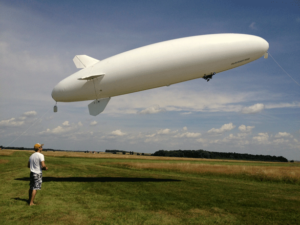
- Aircrafts such as balloons and blimps are designed such that when filled with a gas lighter than air (Eg. hot air , Helium, Hydrogen) displaces the atmospheric air apart and floats in the air like a wooden plank floats in water. The difference in density of gas inside and outside the aircraft creates the lift in these aircrafts.
3.Rotary Wing Aircrafts

- Rotor blades work exactly the same way as a fixed wing, however constant aircraft forward movement is not needed to produce airflow over the blades, instead the blades themselves are in constant movement which produce the required airflow over their airfoil to generate lift.
- Multi Rotor are further sub classified based on number of rotors:
- Quadcopter – 4 Rotors
- Hexacopter – 6 Rotors
- Octocopter – 8 Rotors
- Deca-copter – 10 Rotors
- Do-Deca-copter – 12 Rotors
- Advantages :
The biggest advantage of rotary UAVs is that they can take off and land vertically. This allows the user to operate with in a smaller vicinity with no requirement of landing/take off area. Their capacity to hover and perform agile manoeuvring makes rotary wing UAVs well suited to applications like inspections where precision manoeuvring for extended periods of time is required.
Tip: Also tell them classification based on the sizes- nano-drones, micro-drones, mini-drones
👐 Activity
Discuss the applications of drones. Ask students if they are given a chance to build a drone, for what purpose will they make it. Brainstorm with them for ideas and use cases.
💡 Tips
To make the classroom more interesting , discuss how is a helicopter work and how the issues of helicopter helped paved the way for Quadcopters.
Here’s the information you need:
Working principle of Helicopter :
A helicopter has thousands of intricate components but we don’t need to worry about all of them. We are going to have a look at the bigger bits such as main rotor system (generates lift, pitch and roll) and tail rotor system (counters torque created by main rotor)
Here’s how a main rotor system works :
- Main rotor system consists of swash plate assembly , main rotor mast/shaft, blades, blade pitch horns and rotor hub.
- The blades are shaped like airfoils and they generate lift as they rotate.
- Swash plate assembly helps pilot to communicate with the main motor system. It consists of two main components – Upper and Lower swash plate
- Upper swash plate is connected to main rotor shaft with special linkages. As the engines turns the rotor shaft, it also turns the upper swash plate which transfers this information to rotor blades (through special pitch linkages) and changes the blade angle Vertical pitch links push the blades up and down, making them swivel as they rotate. The pitch links move up and down according to the angle of the swash plates. (We will about blade angle in detail in module 7).
- There are two turbo-shaft jet engines, one on either side of the rotors. If one engine fails, there should still be enough power from the other engine to land the helicopter safely.
🙋 Frequently Asked Questions
- Why suddenly drones became popular?
(This is a sort of subjective question)
Human race has been fascinated by flying for a long time. Advancement in technology and boom in embedded systems. Now with the power of Pluto like innovation anyone can experience and appreciate aviation engineering. - Can Torpedo be considered as UAV?
No, since it is underwater missile, it can’t be termed as UAV
